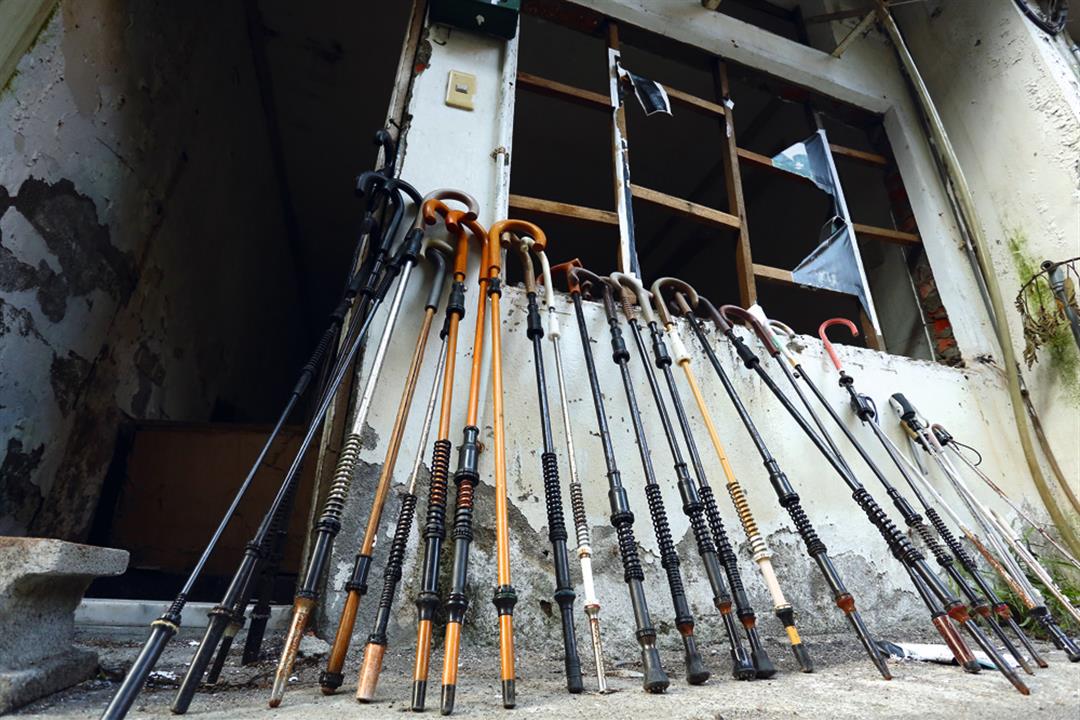First resettle, then develop
The new Taipei urban plan that was announced in 2000 assigned the land on which stand Huanmin New Village, the illegal structures, and the former agricultural station housing, to National Taiwan University of Science and Technology (NTUST). However, the government said that the school had to first resettle the residents before proposing a plan to develop and use the land.
At the end of 2011, the Ministry of Defense moved the residents of Huanmin into a nearby public housing estate. This year the MOD began dismantling their empty former homes in preparation for turning their shells and the land over to NTUST.
Lin Dingjie says that after the residents of Huanmin New Village moved out, this April the contractor began removing doors, windows, and non-load-bearing walls. But Lin feels that the destruction of the now-empty old homes is unnecessary and inexplicable. “Even if the people have moved away, why tear down perfectly useable buildings?”
The entrance to Huanmin New Village at the foot of Toad Mountain is where the settlement begins, and residents used to gather there and socialize. As early as a year ago, when residents were moving out of the military families’ community, Lin’s girlfriend Feng Zhongtian, a writer by trade, made a film about three old veterans who have left Huanmin in body but not in spirit. All in their 80s, they return each and every day to Huanmin, no matter how far they have to travel or how difficult it is to get around at their age, to chat and reminisce with old friends still living in the illegal structures there.
In April, when he saw that demolition work was beginning on the military community, Lin Dingjie quickly contacted Kang Min-jay, a professor in the Graduate Institute of Building and Planning at National Taiwan University, and asked him to come to the site. Kang suggested that they measure the structures and make architectural drawings of them, and the two of them formed a “club” to recruit people for this job; some participants are foreigners who have come from as far away as Hong Kong and Japan!
The members of the Toad Mountain Club feel that since the urban plan requires that the residents be resettled before development of the land can begin, and considering that the roughly 70 households in the illegal structures and in the housing that belonged to the agricultural research station have not yet been resettled, much less the additional people living even farther up the hill in a jurisdictional no-man’s-land beyond the zone of illegal structures, NTUST and the MOD have no reason to rush into tearing down Huanmin New Village.
Once Huanmin New Village is completely torn down, NTUST plans to use the land to put up a high-rise structure. Lin Dingjie is worried that even if the remaining houses up on the “pass” of the hill are not torn down, the mountain community culture that has evolved over the past six decades will disappear under the literal and figurative shadow of the stylish new high-rise.

The people have left Huanmin New Village and the houses are empty. In this photo, artists calling for preservation of Toad Mountain’s history have put canes left behind by relocated former residents on display.